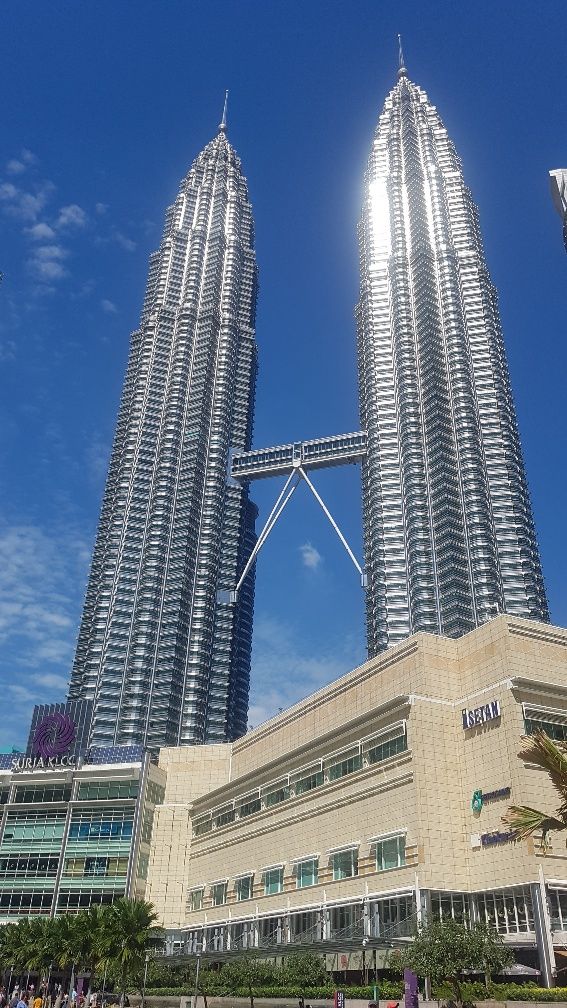Croatia
Croatia is a sovereign state between Central Europe, Southeast Europe, and the Mediterranean. Croatia covers 56,594 square kilometres and has diverse, mostly continental and Mediterranean climates. Croatia's Adriatic Sea coast contains more than a thousand islands - making it an ideal location for sailing and comparable to Greek Island sailing
The Croatians arrived in the area of present-day Croatia during the early 7th century. They organised the state into two duchies by the 9th century. Tomislav became the first king by 925, elevating Croatia to the status of a kingdom. Croatia entered a personal union with Hungary in 1102. In 1527, faced with Ottoman conquest, the Croatian Parliament elected Ferdinand I of the House of Habsburg to the Croatian throne. In 1918, after World War I, Croatia was included in the unrecognized State of Slovenes, Croats and Serbs which seceded from the Austro-Hungarian empire and merged into the Kingdom of Yugoslavia. Croatian became a fascist puppet state backed by Fascist Italy and Nazi Germany existed during World War II. After the war, Croatia became a founding member and a federal constituent of the Socialist Federal Republic of Yugoslavia, a constitutionally socialist state. On 25 June 1991 Croatia declared independence, which came wholly into effect on 8 October of the same year. The Croatian War of Independence was fought successfully during the four years following the declaration.
Tourism is a significant source of revenue during the summer, with Croatia ranked the 18th most popular tourist destination in the world.
Dubrovnik
Dubrovnik is a Croatian city on the Adriatic Sea, in the region of Dalmatia. It is one of the most prominent tourist destinations in the Mediterranean Sea. The prosperity of the city was historically based on maritime trade; as the capital of the maritime Republic of Ragusa.
For many visitors Dubrovnik is King's Landing, capital of Westeros. And its starring role in the series has prompted other filmmakers to move in. This spring saw Benicio Del Toro and Laura Dern in town, for the filming of Star Wars: Episode VIII. And in early 2017, Dubrovnik's cobbled alleys will once again be packed for the shooting of Robin Hood: Origins, produced by Leonardo DiCaprio, and starring Taron Egerton as Robin Hood and Jamie Foxx as Little John. It's likely that this will not be just one film, but a trilogy.
Lokrum is only fifteen minutes away from Dubrovnik’s old town streets, via steam boat. The island is crossed with cobblestone paths leading to a monastery, an old fort, botanical gardens, olive groves, swimming holes, and a simple cafe or two selling drinks accompanied by live music.The story goes that Lokrum Island was settled with the founding of a Benedictine abbey and monastery in 1023 and received its title from the Latin word acrumen meaning “sour fruit,” a name given for its Benedictine inhabitants’ cultivation of exotic fruits on the island.
The first set of walls to enclose the city was built in the 9th century. In the middle of the 14th century the 1.5m-thick defences were fortified with 15 square forts. The threat of attacks from the Turks in the 15th century prompted the city to strengthen the existing forts and add new ones, so that the entire old town was contained within a stone barrier 2km long and up to 25m high. The walls are thicker on the land side – up to 6m – and range from 1.5m to 3m on the sea side.
The round Minčeta Tower protects the landward edge of the city from attack, the Bokar Tower and Fort Lawrence look west and out to sea, while Fort Revelin and Fort St John guard the eastern approach and the Old Harbour. There are entrances to the walls from near the Pile Gate, the Ploče Gate and the Maritime Museum. The Pile Gate entrance tends to be the busiest, and entering from the Ploče side has the added advantage of getting the steepest climbs out of the way first. Don't underestimate how strenuous the wall walk can be, especially on a hot day. There's very little shelter and the few vendors selling water on the route tend to be overpriced. Get a pivo overlooking the Adriatic though
Split
Split is the second-largest city in Croatia. It lies on the eastern shore of the Adriatic Sea, centered on the Roman Palace of the Emperor Diocletian. Spread over a central peninsula and its surroundings, Split's greater area includes the neighboring seaside towns as well. An intraregional transport hub and popular tourist destination, the city is a link to numerous Adriatic islands and the starting point for most 'Sail Croatia' trips.
While traditionally Split is considered just over 1,700 years old, counting from the construction of Diocletian's Palace in 305 CE, the city was in fact founded as the Greek colony of Aspálathos in the 3rd or 2nd century BCE. It became a prominent settlement around 650 CE, when it succeeded the ancient capital of the Roman province of Dalmatia, Salona: as after the Sack of Salona by the Avars and Slavs, the fortified Palace of Diocletian was settled by the Roman refugees.
Venice eventually prevailed and during the early modern period Split remained a Venetian city, a heavily fortified outpost surrounded by Ottoman territory. After being occupied in 1813, it was eventually granted to the Austrian Empire following the Congress of Vienna, where the city remained a part of the Austrian Kingdom of Dalmatia until the fall of Austria-Hungary in 1918 and the formation of Yugoslavia. During World War II, the city was annexed by Italy, then liberated by the Partisans after the Italian capitulation in 1943. It was then re-occupied by Germany, which granted it to its puppet Independent State of Croatia. The city was liberated again by the Partisans in 1944, and was included in the post-war Federal Yugoslavia, as part of its republic of Croatia. In 1991 Croatia seceded from Yugoslavia amid the Croatian War of Independence.
Marco Polo, the famous explorer, was born on the Croatian island of Korcula. While wandering through the historic centre of Split, you will notice the Roman walls, squares and temples. Because of its ideal climate, with 2,800 hours of sunlight per year, locals have other names for Split: ”The most beautiful city in the world” and “Mediterranean flower”. A lot of famous Croatian sportsmen were born in Split. In their honor, locals called their city “The sportiest city in the world”. The most popular sport institution is the football club “Hajduk”. All over the city, you will notice Hajduk’s colors and logo. It is a work of Torcida, the oldest fan group in Europe, established in 1950. Beside the bell tower of St. Domnius, important city symbols are the Dalmatian dog and a donkey. Locals have a great respect for donkey for its indispensable place in hard labor and transport in Dalmatian mountains in the past.
Almost everything worth seeing is concentrated in the old town behind the seafront Riva, built around various remains and conversions of Diocletian’s Palace itself, as well as its medieval additional buildings, situated on the Western side of the palace. You can take a walk through this area in approximately ten minutes, although it would take you a lifetime to explore all its nooks and crannies. On both sides, the old town fades into low-rise suburbs of stone houses, jammed around narrow alleys – Veli Varos, on the Western side of the old town, and Manus, on the Eastern. They are very well preserved, and although there are not highlights, they’re worth a brief walk.
Zadar
Zadar is the oldest continuously inhabited city in Croatia. The area of present-day Zadar traces its earliest evidence of human life from the late Stone Age, while numerous settlements have been dated as early as the Neolithic. Before the Illyrians, the area was inhabited by an ancient Mediterranean people of a pre-Indo-European culture. Zadar traces its origin to its 4th-century BC founding as a settlement of the Illyrian tribe of Liburnians known as Iader. In 59 BC it was renamed Iadera when it became a Roman municipium, and in 48 BC, a Roman colonia. It was during the Roman rule that Zadar acquired the characteristics of a traditional Ancient Roman city with a regular road network, a public square (forum), and an elevated capitolium with a temple.
After the fall of the Western Roman Empire in 476 and the destruction of Salona by the Avars and Slavs in 614, Zadar became the capital of the Byzantine theme of Dalmatia in the 7th century. In the beginning of the 9th century, Zadar came under short Frankish rule, and was returned to the Byzantines by the Pax Nicephori in 812. The first Croatian rulers gained control over the city in 10th century.
In 1202, Zadar was conquered and burned by the Republic of Venice, which was helped by the Crusaders. Croatians again regained control over the city in 1358, when it was given to the Croatian-Hungarian king Louis I. In 1409, king Ladislaus I sold Zadar to the Venetians. When the Turks conquered the Zadar hinterland at the beginning of the 16th century, the town became an important stronghold, ensuring Venetian trade in the Adriatic. After the fall of Venice in 1797, Zadar came under the Austrian rule until 1918, except for the period of short-term French rule (1805–1813), still remaining the capital of Dalmatia.
One thing I haven’t mentioned is how quirky it can be, if you know where to look. My favorite oddity in town is the famous Sea Organ. What looks like steps leading into the sea along the city’s famous boardwalk is actually a working organ, operated entirely by the water. Completed in 2005 along with repair work after the Croatian War of Independence, the stairs extend for 70 meters and under them are 35 pipes of varying length and height that play 7 chords of 5 tones depending on the tides.
Plitvice Lakes NP
Plitvice Lakes National Park is one of the oldest national parks in Southeast Europe and the largest national park in Croatia. In 1979, Plitvice Lakes National Park was added to the UNESCO World Heritage register.The national park was founded in 1949 and is situated in the mountainous karst area of central Croatia, at the border to Bosnia and Herzegovina.
The protected area extends over 296.85 square kilometres. About 90% of this area is part of Lika-Senj County, while the remaining 10% is part of Karlovac County.
Each year, more than 1 million visitors are recorded. Entrance is subject to variable charges, up to 180 kuna or around €24 per adult in peak season. Plitvice Lakes NP, is a series of lakes arranged in cascades. The lakes are the result of several small rivers flowing into one another, originally formed from mountain runoff. The lakes flow into one another, separated by natural travertine dams and all following the same general water flow.
- It’s large – But, many people visit Plitvice as a day trip, or at the most spend two days there, so the size of the park can feel a bit daunting at first, but it is entirely manageable. The protected area covers almost 300 square kilometers, but some of the most beautiful hiking trails only take a few hours to navigate. There are plenty of options to see the best of the lake and river complex, so be sure to check the information office when you arrive.
Massive diversity of flora and fauna – A lack of pollution, few buildings and other common human errors have left in place about 75 plant species that are endemic, meaning that they don’t exist anywhere else. Even the animal life has benefited, the brown bear for example still calls the nearby woods and mountains home. We even saw a salamander




